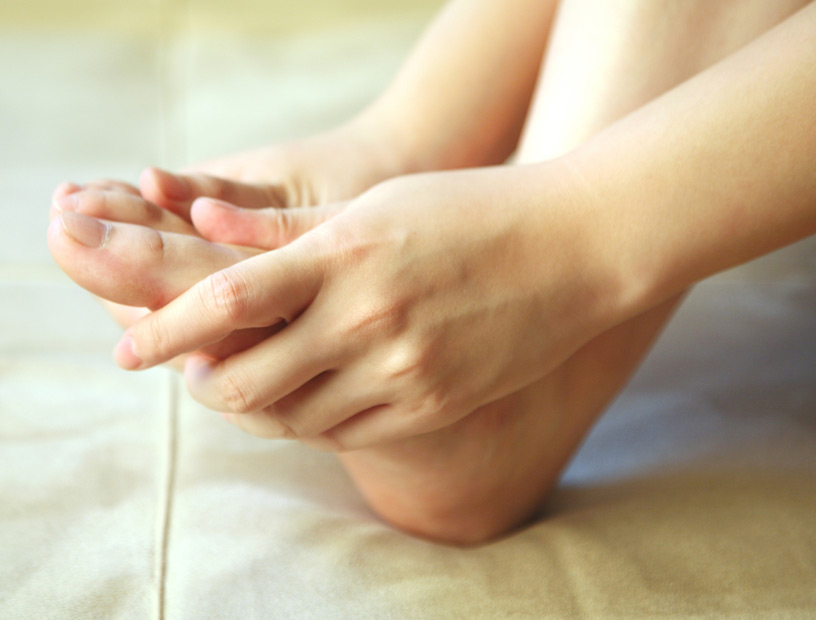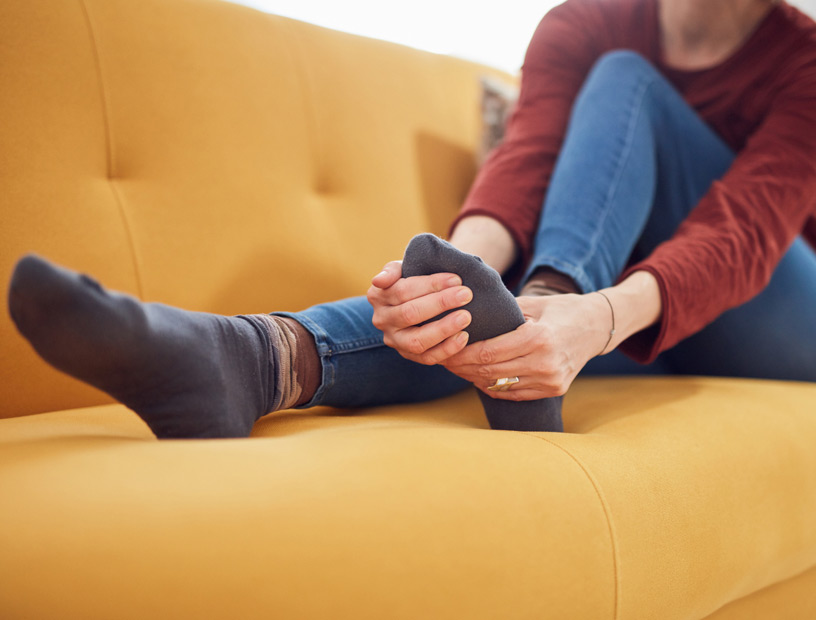
Learn more about how you can manage and prevent hammertoes.
Hammertoe is a painful deformity of the foot that happens when there is an imbalance in the ligaments, tendons, and muscles that allow the toe to maintain a straight position. The hammertoe is an abnormal bend in the center joint of the toe. The condition is most common in the second, third, and fourth toes. Your big toe only has two joints and is only rarely affected by bending disorders. Your risk of hammertoe is higher if:
- You wear shoes that are too small for your feet
- You are female
- You spend a great deal of time standing
Causes
Hammertoe is closely linked with wearing high-heeled shoes and shoes with narrow toe boxes. These shoes cause your toes to be squished together and crowd them such that they cannot lie flat. Wearing these shoes on a regular basis may lead to a permanently curled toe position.
Traumatic injuries such as a severe stub or a fracture of one of your toes can also cause hammertoe. An imbalance or unusual shortness of a muscle or ligament in your toe may cause hammertoe as well. If your second toe is longer than your great toe, it has a higher risk of developing the condition. People with bone diseases such as arthritis may develop this deformity, as well as those with diabetes or impaired circulation. In some families, hammertoe may be a hereditary condition.
Symptoms

The primary symptom of hammertoe is an abnormal bend in the middle of your second, third, or fourth toe, and you cannot straighten it. Moving your affected toe can be difficult and painful. You may get corns or calluses on the toe and the toes on either side of it. Your toenail could be damaged because of rubbing up against the top of your shoes. Repeated rubbing of the soft tissue of your toes could cause a sore to form. The dark, moist conditions of the toes when you are wearing shoes could lead to an ulcer or infection in the affected toe, especially if you have diabetes.
Treatments
If you can still straighten your toe and your toe has full movement, your orthopedic doctor may recommend changing the type of shoe that you wear. You may be instructed to wear athletic shoes or low-heeled shoes with orthotic inserts or pads to cushion and protect your feet. These inserts can relieve pressure from your affected toe, which can help to lessen pain and inflammation.
Your orthopedic care team might also show you how to do foot-strengthening exercises such as picking up marbles with your toes. These exercises help to strengthen and stretch the muscles and ligaments of your toes. If these treatments do not help, surgery may be an option. An orthopedic surgeon can do a tendon release surgery or bone removal surgery so that your toe can lie flat.

on caring for specific orthopedic needs.
